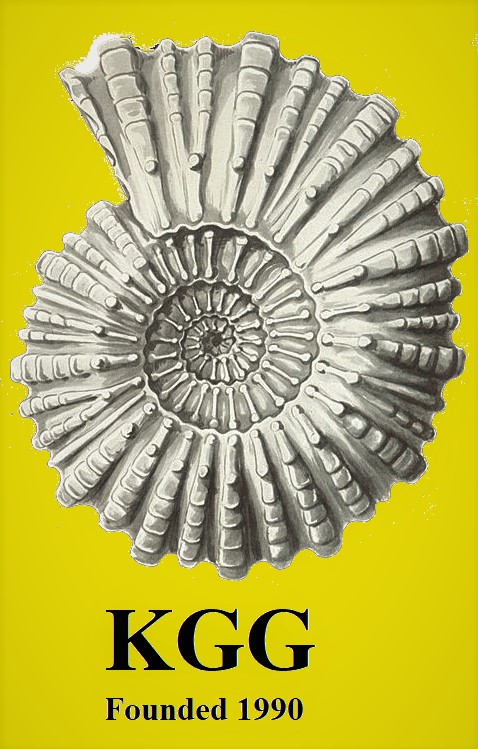
|
KENT GEOLOGISTS' GROUPChemical Bonding |

|
Chemical Bonding
Chemical bonding is the process by which atoms combine to form compounds. There are four types of chemical bond, of which the ionic bond and the covalent bond are, probably, of most interest to geologists and mineralogists.
The ionic bond
An ionic bond is created when electrons pass betweem atoms creating cations (positively charged ions) and anions (negatively charged ions). Ions of opposite charge attract each other. The attracting force is equal in all directions and increases as the distance between the ions decreases. The ions therefore tend to pack together into a lattice whose shape is determined by the sizes, and therefore packing, of the ions involved. An example, the lattice for sodium chloride, is shown in Atoms, Electrons and Compounds. Most good books on minerals show the lattice structure for each group of minerals.
The lattice unit cell determines a material's properties. The cell shape and dimensions determine the crystal system; a major feature in identifying minerals in the hand. The more closely the ions can pack, the greater is the bonding force and the greater is the hardness of the mineral. Some lattice arrangements have weak internal links that result in easy cleavage in one particular plane. A well known example is the Mica family. In practice minerals are seldom formed by 100% ionic bond. They are usually part ionic/part covalent.The covalent bond
A covalent bond is created when two atoms share outer shell electrons so that the electrons orbit around both atoms giving each a full complement of electrons in its outer shell. In a covalent bond no electrons are given up or acquired so no ions are formed. A covalent bond is therefore possible between two atoms of the same type and is the means by which molecules are formed.
The metallic bond
The outer electrons of metals are only loosely attracted to the nucleus and are therefore easily detached. The resulting metal cations tend to cluster together with the detached electrons surrounding the cations as an anionic cloud. This electron cloud is the source of the electric current that flows in a metal connected between the terminals of a battery. It is the reason why metals are such good electrical conductors.
The Van der Waal bond
This is a weak force that binds the noble gases and some elements such as Sulphur and Graphite. It is associated with a low melting temperature.
| Atoms, Elements and Compounds |